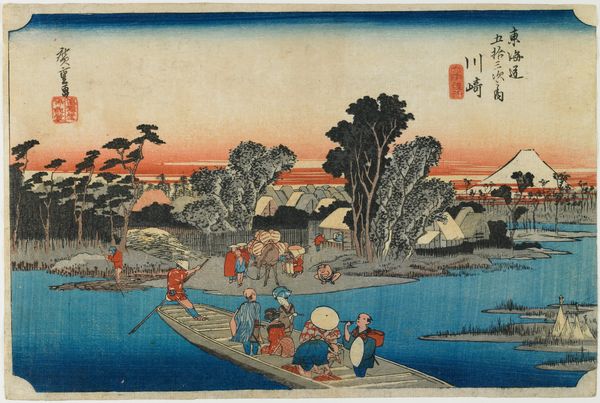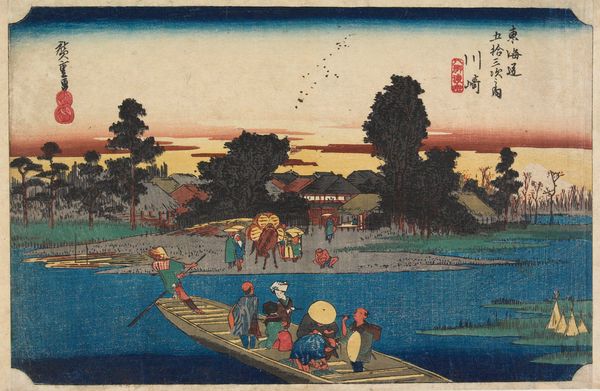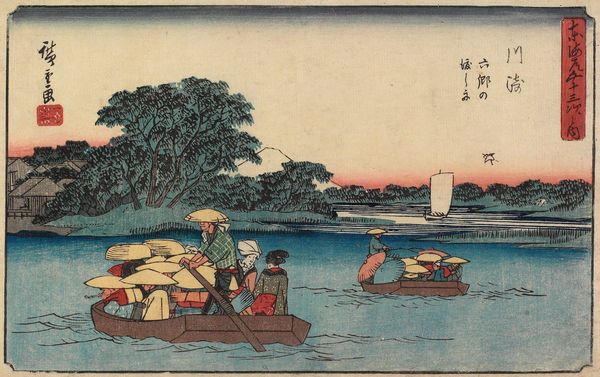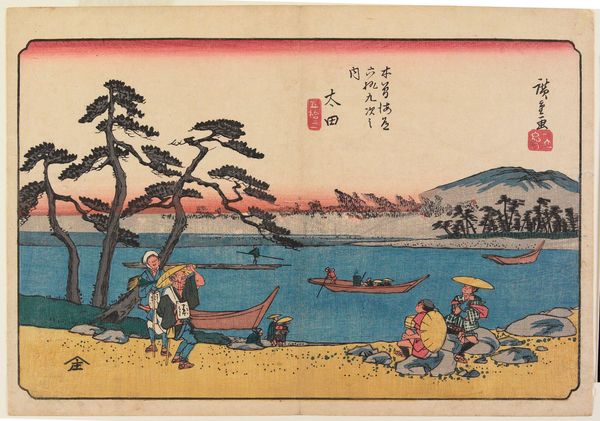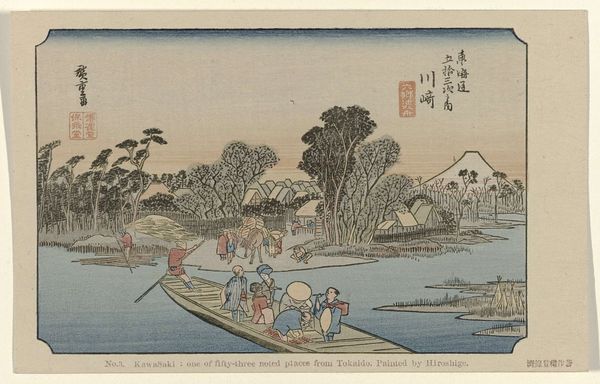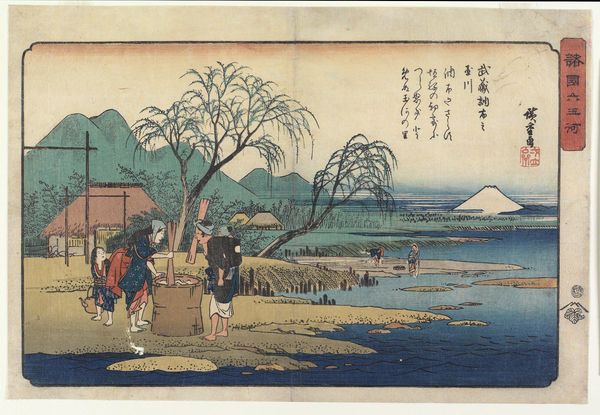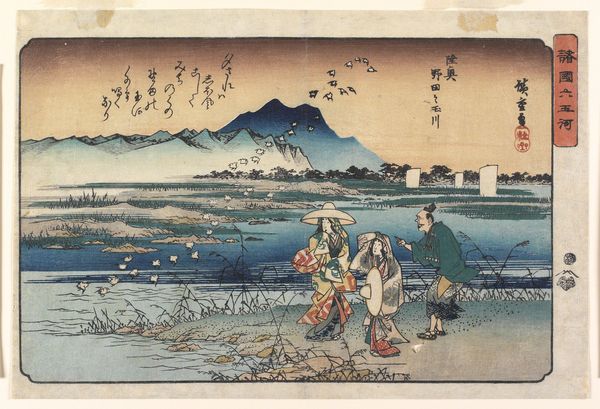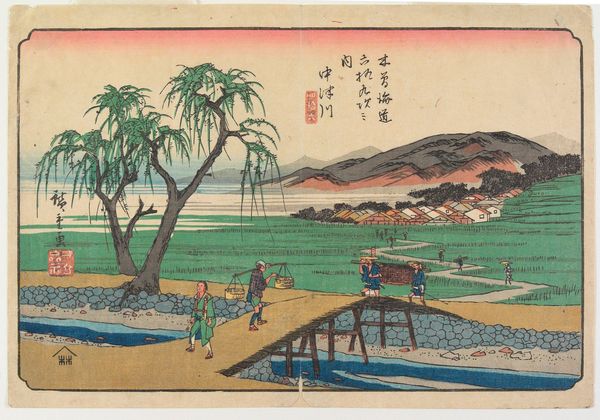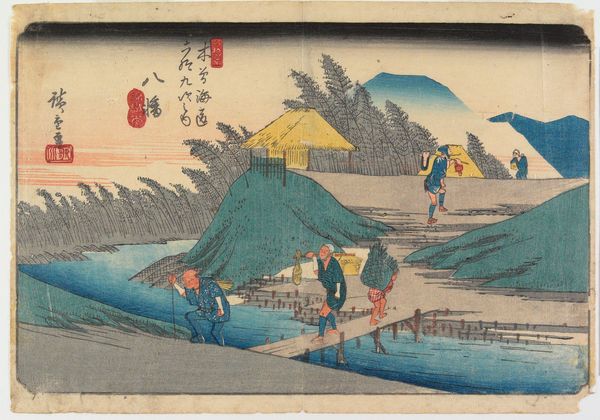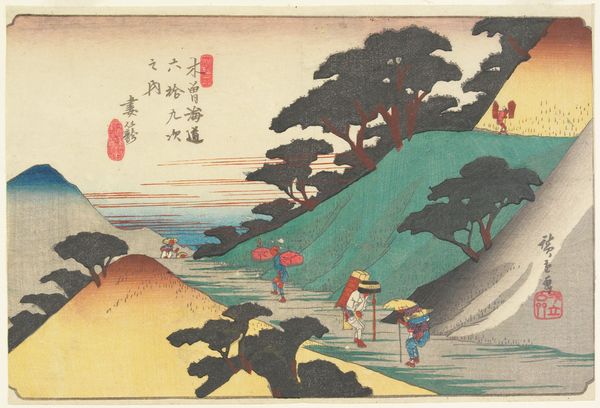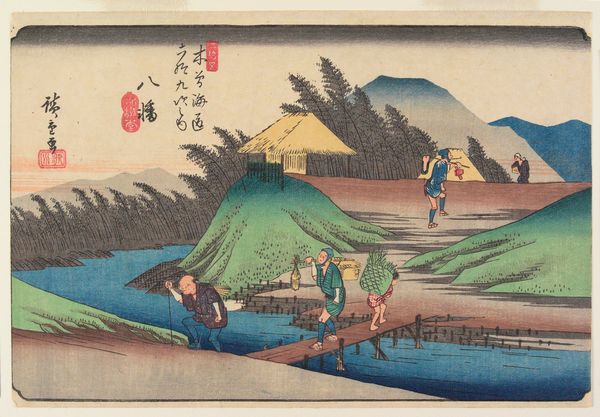
tempera, print, ink, woodblock-print
#
tempera
# print
#
asian-art
#
landscape
#
ukiyo-e
#
japan
#
figuration
#
ink
#
coloured pencil
#
woodblock-print
#
watercolor
Dimensions: 9 7/8 × 14 5/8 in. (25.1 × 37.1 cm) (sheet, horizontal ōban)
Copyright: Public Domain
Editor: This woodblock print, "Kawasaki - The Rokugō Ferry," created by Utagawa Hiroshige in the early 1830s, captures a bustling ferry scene. The colors are so vibrant; what really strikes me is how this seemingly simple image conveys so much about the movement of people and goods. What do you see in this piece? Curator: I see the material conditions of travel and trade visualized. Look at the detail Hiroshige provides, using the woodblock printing technique to emphasize texture – the meticulously carved lines creating ripples on the water, the patterned clothes. It's about rendering the experience of labor palpable, wouldn't you agree? What are those people carrying, how far are they going, and at what cost? Editor: I hadn't thought of it that way, focusing instead on the picturesque view of Mount Fuji in the background. So you're saying the print isn't just a pretty picture, but speaks to the work and the economic system underlying daily life? Curator: Precisely. Notice how the materials – the woodblocks themselves, the inks, the paper – are deployed not to represent a rarefied, elite vision, but to document the tangible reality of Tokugawa Japan's burgeoning merchant class and infrastructure needs. The ferry is a material object used to overcome natural features like the river. The very print serves as a commodity for the public consumption! Editor: That's fascinating! It definitely changes how I see it. Before, I focused on the scenery and now I’m looking at it from a different lens, acknowledging and valuing the commercial and labor aspects that made this scene – and this artwork – possible. Curator: And that's precisely what a materialist approach allows us to do, to uncover these systems that permeate even what we consider "fine art." Editor: Absolutely. Thank you for showing me the value of looking deeper at process, materials, and context.
Comments
minneapolisinstituteofart almost 2 years ago
⋮
These two editions show small but crucial changes. It is possible that the later edition (right) was produced from a new set of blocks, rather than from the blocks used to produce the earlier edition. Most notably, Mount Fuji has been made smaller in the later edition, and the rafts man has been omitted.
Join the conversation
Join millions of artists and users on Artera today and experience the ultimate creative platform.
